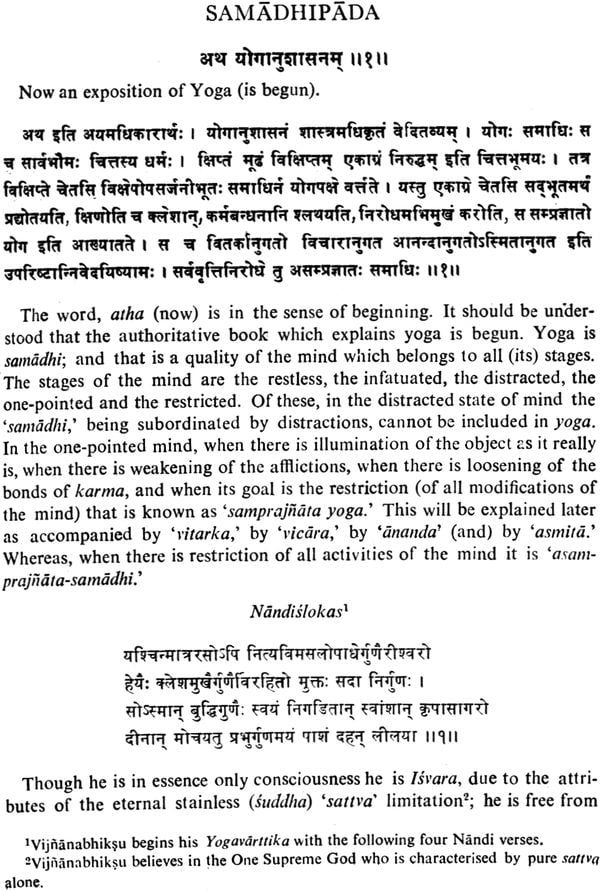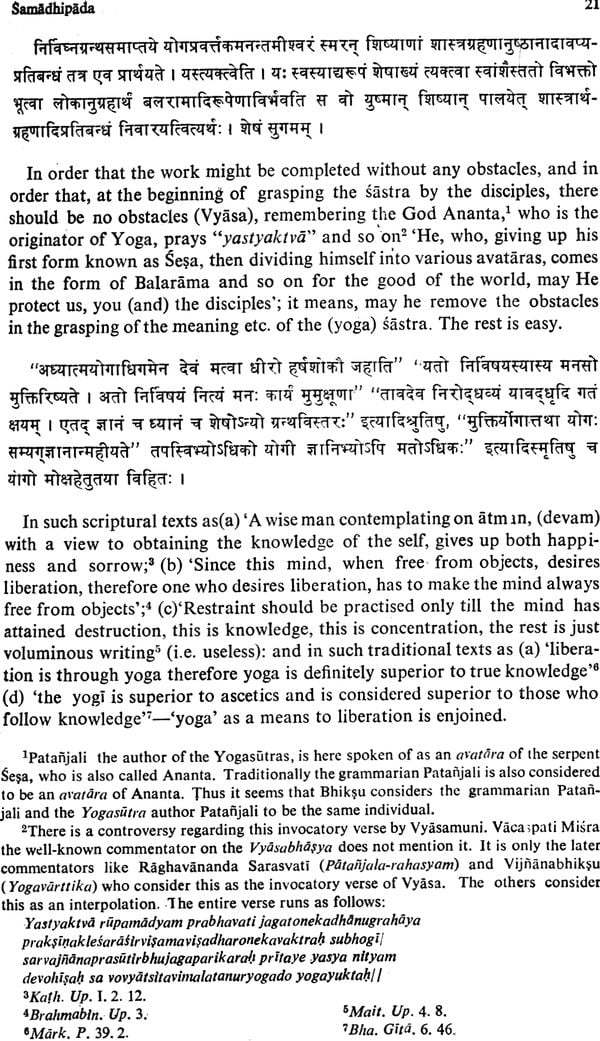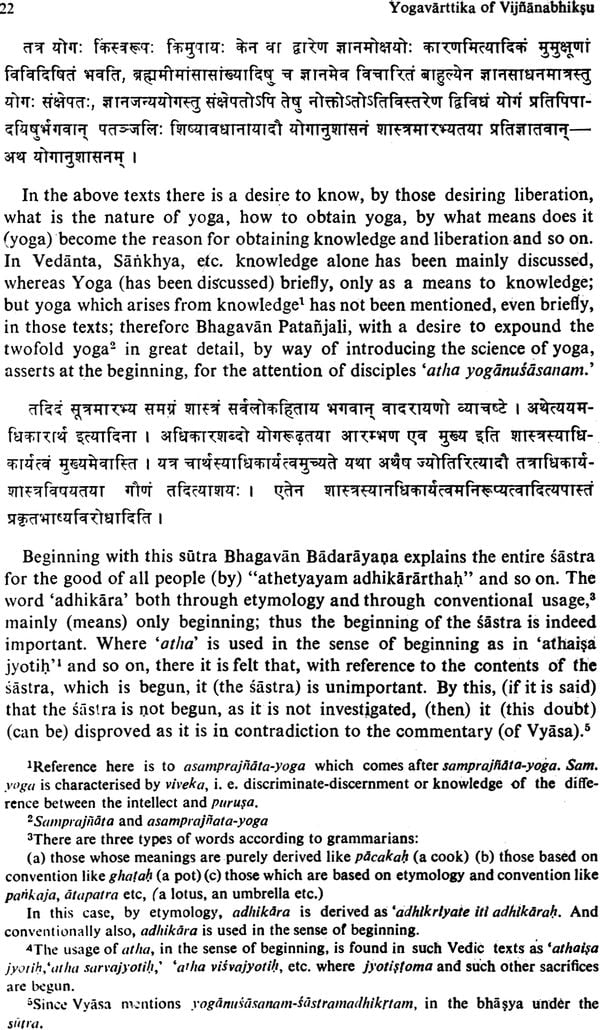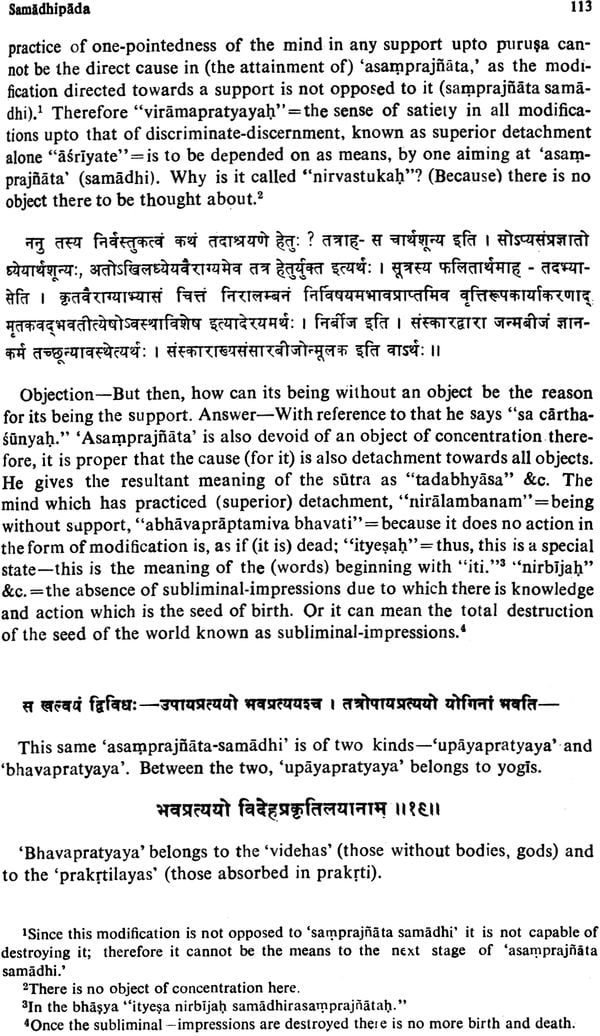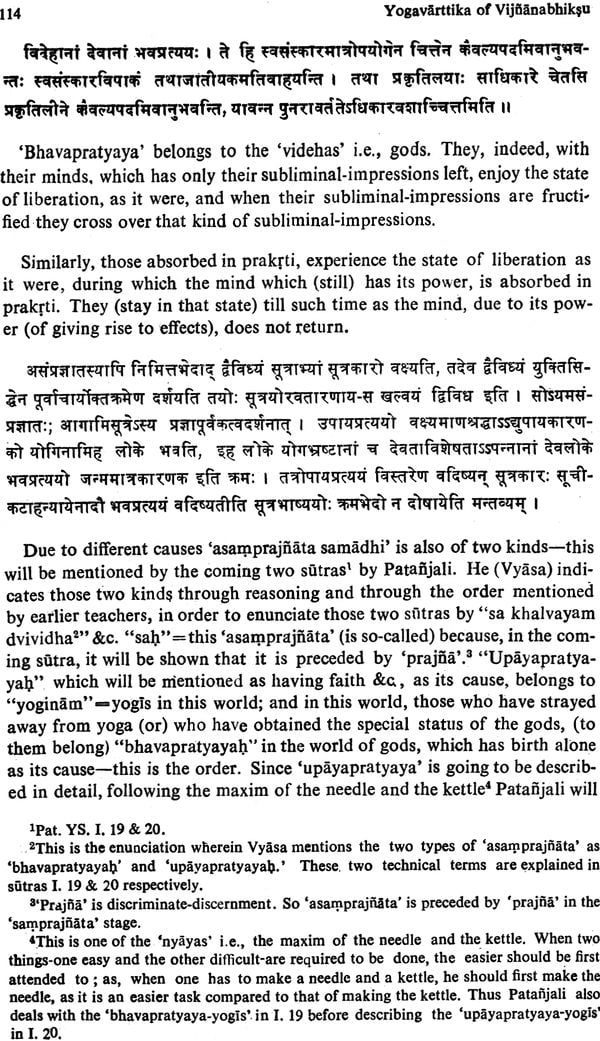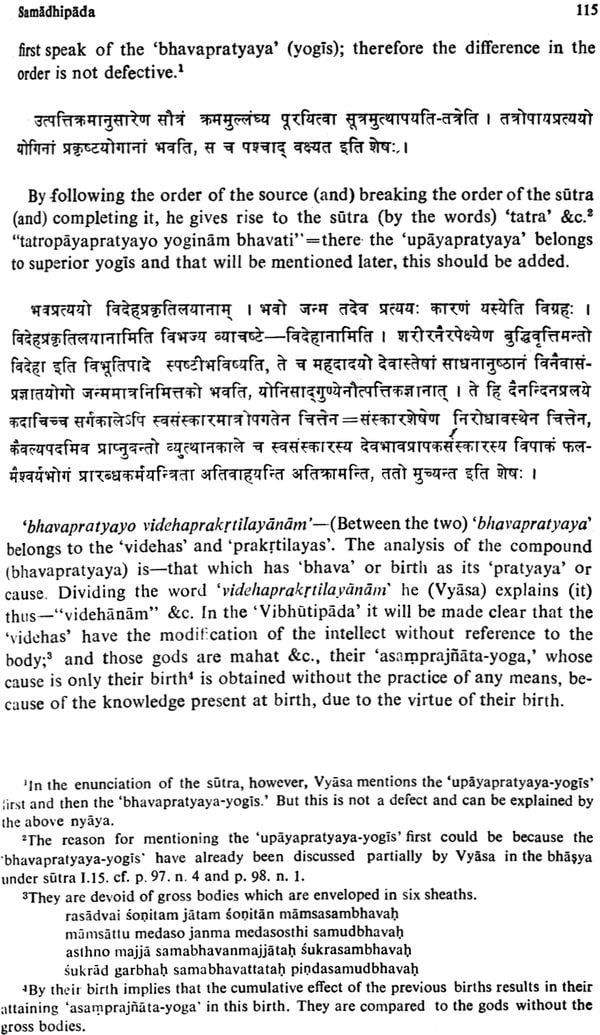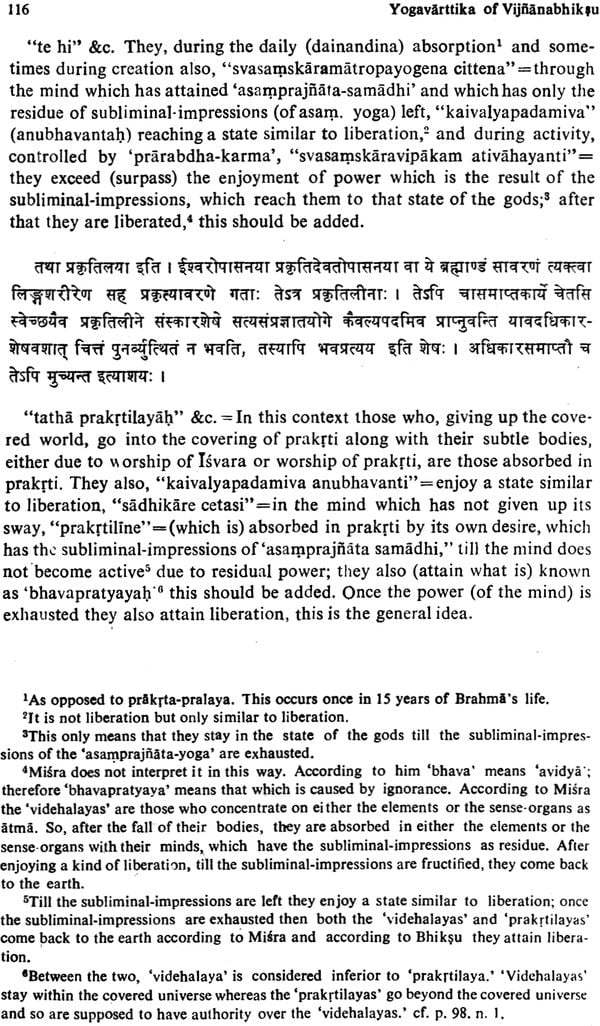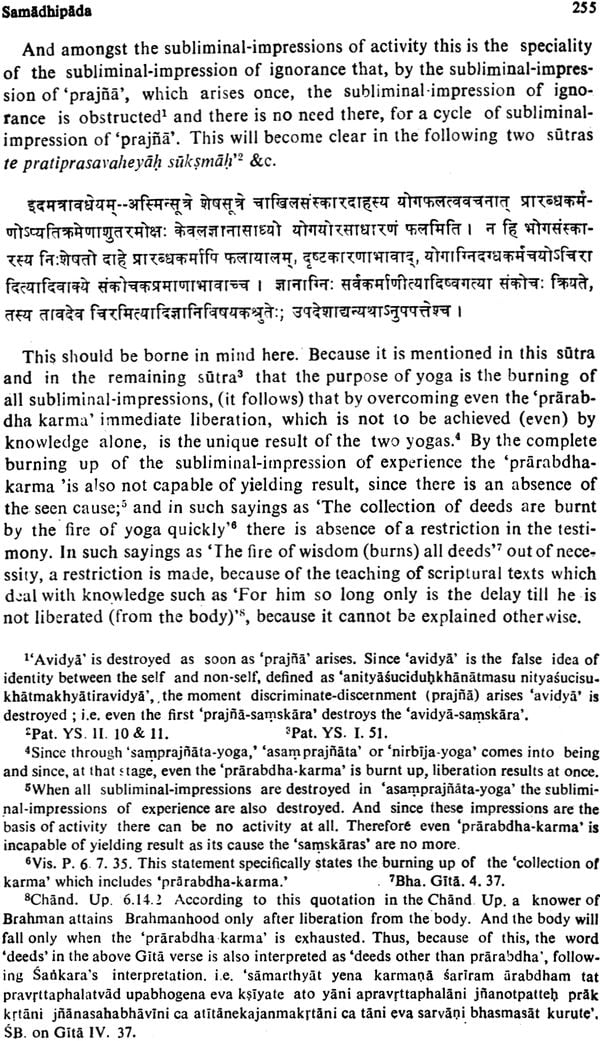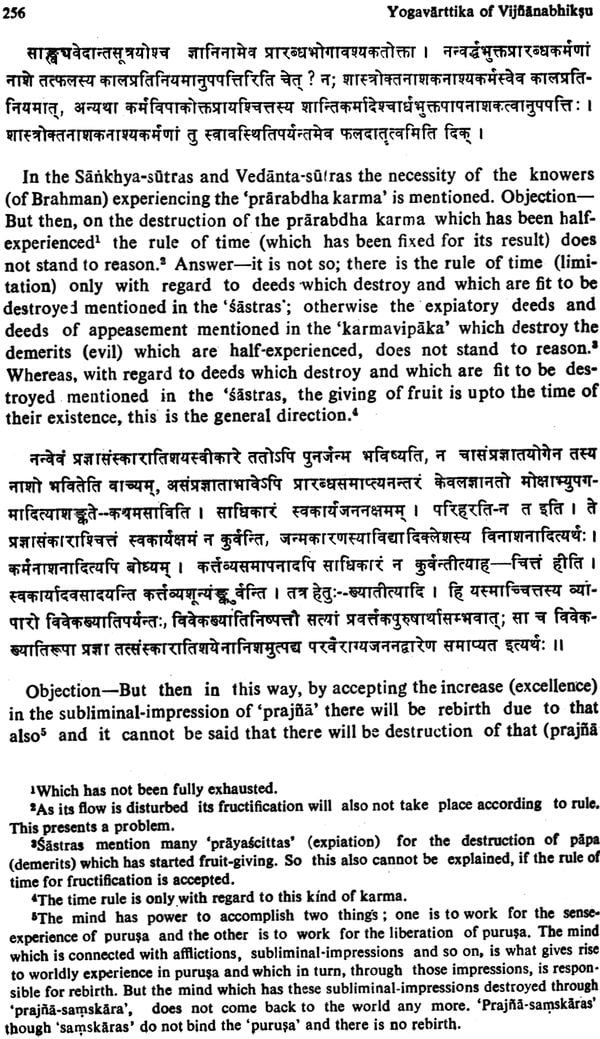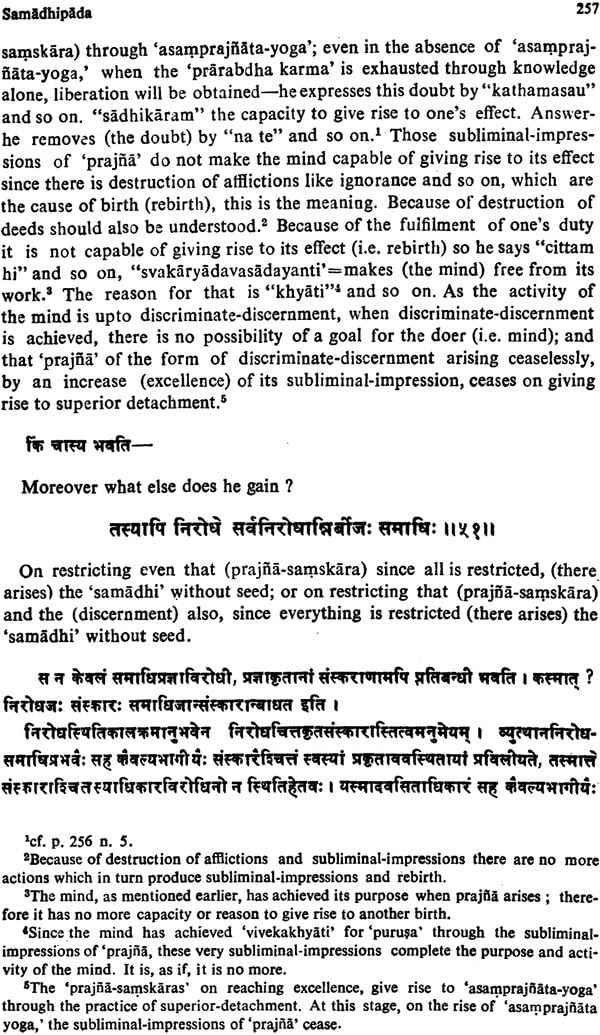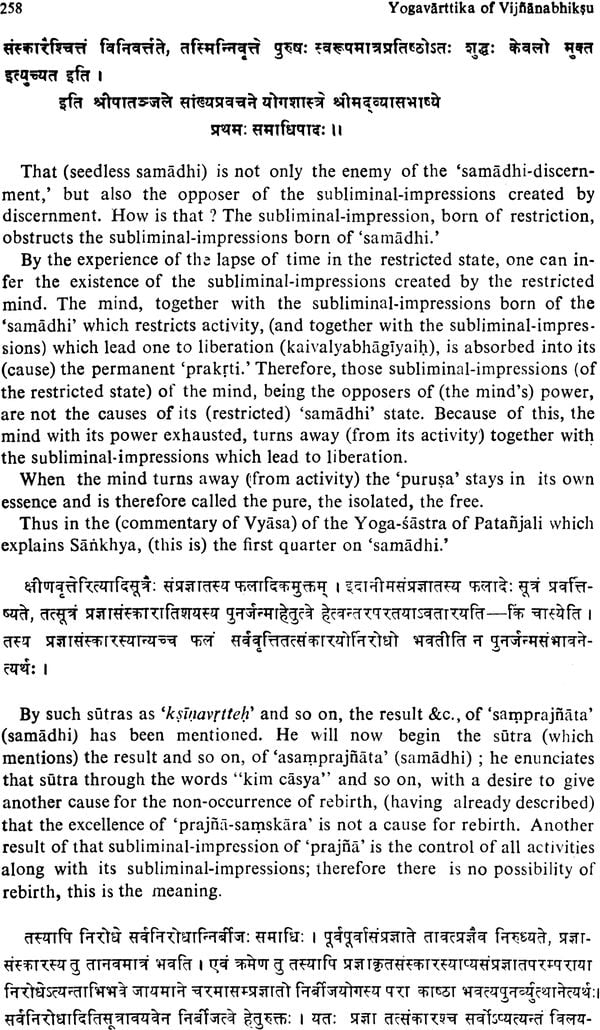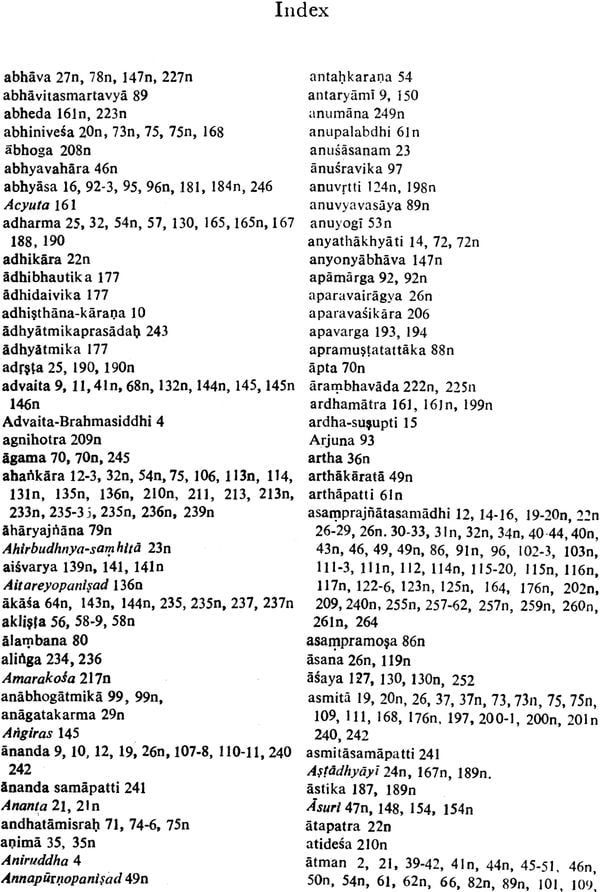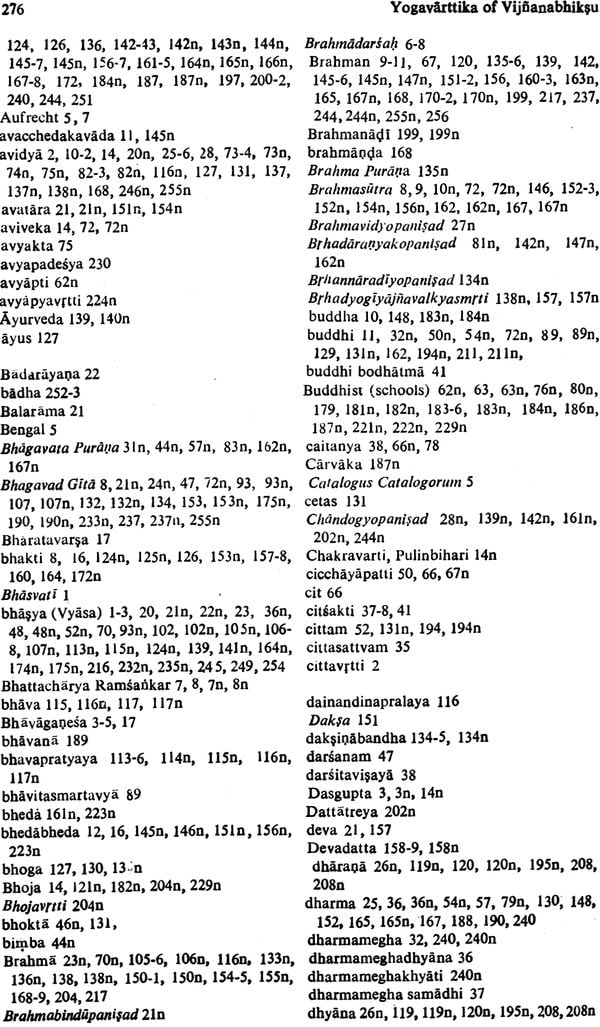
Yogavarttika of Vijnanabhiksu: Vol 1. Samadhipada
Book Specification
| Item Code: | IHD90 |
| Author: | T.S. Rukmani |
| Publisher: | Munshiram Manoharlal Publishers Pvt. Ltd. |
| Language: | Text with English trans. and critical alongwith the text and English trans. of the Patanjala Yogasut |
| Edition: | 2016 |
| ISBN: | 9788121500739 |
| Pages: | 294 |
| Cover: | Hardcover |
| Other Details | 9.9" x 6.5" |
| Weight | 590 gm |
Book Description
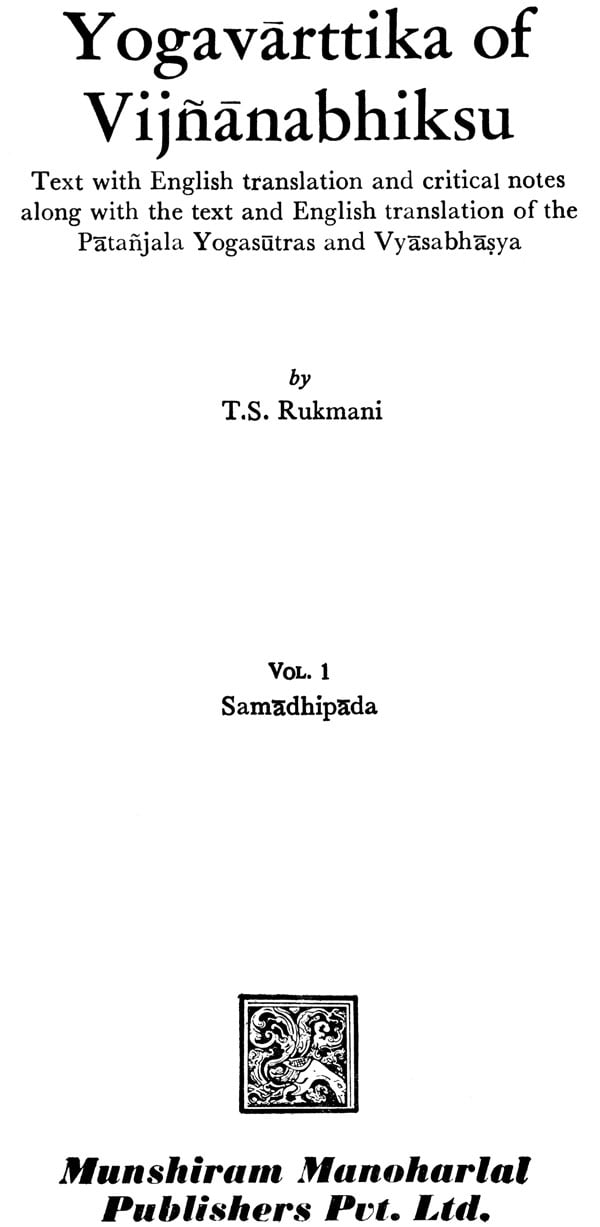
From the Jacket
This is the first time that an attempt to render the Yogavarttika into English has been made. Its syncretic nature and the difficulty of understanding it without the aid of the sutra and bhasya has always deterred the undertaking of this work for a study in such detail. The present work gains added importance due to the critical notes give under every varttika. The Bringing together of all the three-the sutra, bhasya and varttika-will serve the scholar and layman alike and will fulfil the need long felt for such a work.
About the Author
Dr. T.S. Rukmani, was head of the Sanskrit department, Indraprastha Collage for Women. Now she is principal of the Non-Collegate Women's Education Board, Delhi University. Her other published work is A Critical Study of the Bhagavata Purana. She also publish research papers regularly in both national and International Indological Journals.
Vijñanabhiksu holds a very significant position in the history of Indian Philosophy. But it is a pity that both orthodox Sanskrit’s and Western scholars have been less than enthusiastic about the philosophic contribution made by him to the SAipkhya-Yoga school. It is not out of place to speculate about the possible reason or reasons for such neglect. First, Advaitic monism championed by Samkara and his followers held such a sway over the intellectuals and the orthodox mind that an anti-Advaita metaphysical scheme was regarded at worst a distortion and at best a pseudo-Advaita scheme for the monks and yogis. Second, the Bhakti movement in Vedãnta beginning with Rämnuja onwards, constituted the other side of the coin. Reaction against Advaita turned invariably into a form of devotional monotheism, which engaged the other half of the orthodox mind, and hence Vijnãnabhiku’s system appeared to it as dry, cold and lusterless.
Modern scholarship has looked upon Vijnãnabhiku as a syncretist who mixed Vedänta with Sämkhya-Yoga. Hence credit for his originality has been counterbalanced by a dubious feeling that surrounds such syncretism. In the midst of such a complex situation, a systematic study of Vijnanabhikshu has not been taken up for a long time. It is therefore a pleasure to note that some modern scholars are turning their attention to Vijnãnabhiku. Dr. T.S. Rukmani should be congratulated for selecting an important work of Vijnanabhiku, the Yogavãrttika for intensive study and research. She has prepared an annotated translation of the text along with the Yogasusras of Patajali and the Bhasya of Vyäsa.
The present volume is one of the projected four volumes dealing with the four chapters of the Yogasütra-bhasya-varttika. Although numerous translations of the sütras and the bhasya exist, I think Dr. Rukmani has done agrest service to the scholarly world by presenting the text as well as the annotated translation of all the three works in one volume. For one thing, translation of only the Yogavarttika would have been opaque and unintelligible without the sütra and the bhãsya. For another, a fresh translation of the sutra and bhasya means a fresh attempt at understanding the underlying meaning of these texts, and this is always useful when such ancient texts are concerned.
Dr. Rukmani has added a very useful ‘Introduction’ where she has discussed the problems of date and authorship. Besides she has discussed in a synoptic fashion, the philosophic position of Vijnãnabhiku. She has noted not only the significant points of difference between Vijnanabhiksu’s own position and that of the traditional Samkhya system but also his trenchant criticism of the Advaita Vedanta of Samkara. The readers are invited to consult the introduction for a concise account of these issues.
Modern creative research in classical Indian philosophy seems to be often hindered by a lack of readable and reliable translations of important Sanskrit texts. Hence it has long been felt by scholars and intellectual alike that a series of annotated translations of critically edited texts should be produced and published for both academic scholars and general readers Dr. Rukmani has made a significant contribution to this trend.
Vijnanbhiksu’s name figures prominently in all works dealing with sankhya yoga philosophy. His magnum opus on the yoga system the Yogavarttika throws light on a number of yogic points. This important work has not been rendered into English so far which was the main inducement begin this work.
A work of this kind cannot possibly be undertaken without discussions on intricate points with other scholars working in the same areas. I have received help and encouragement from a number of my friends and colleagues I thank each one of them sincerely for whatever help they could give be it in the understanding of a single word in the Varttika or a lengthy discussion on the significance of a particular statement in the Varttika. All these discussions have helped me to understand the Yogavarttika better and I do hope those who read it will find it useful.
My special thanks are due to Dr. Bimal Krishna Motilal Spalding professor of eastern religions and ethics university of Oxford for finding time to read the wrokd and also write a foreword to it.
Thanks are also due to Mr. Devendra Jain of Munshiram Manoharlal publishers for undertaking the publication of this work.
| Foreword | vii |
| Preface | ix |
| List of Abbreviations | xi |
| Introduction | 1 |
| Samadhipada | 19 |
| Glossary | 265 |
| Selected Bibliography | 273 |
| Index | 275 |
